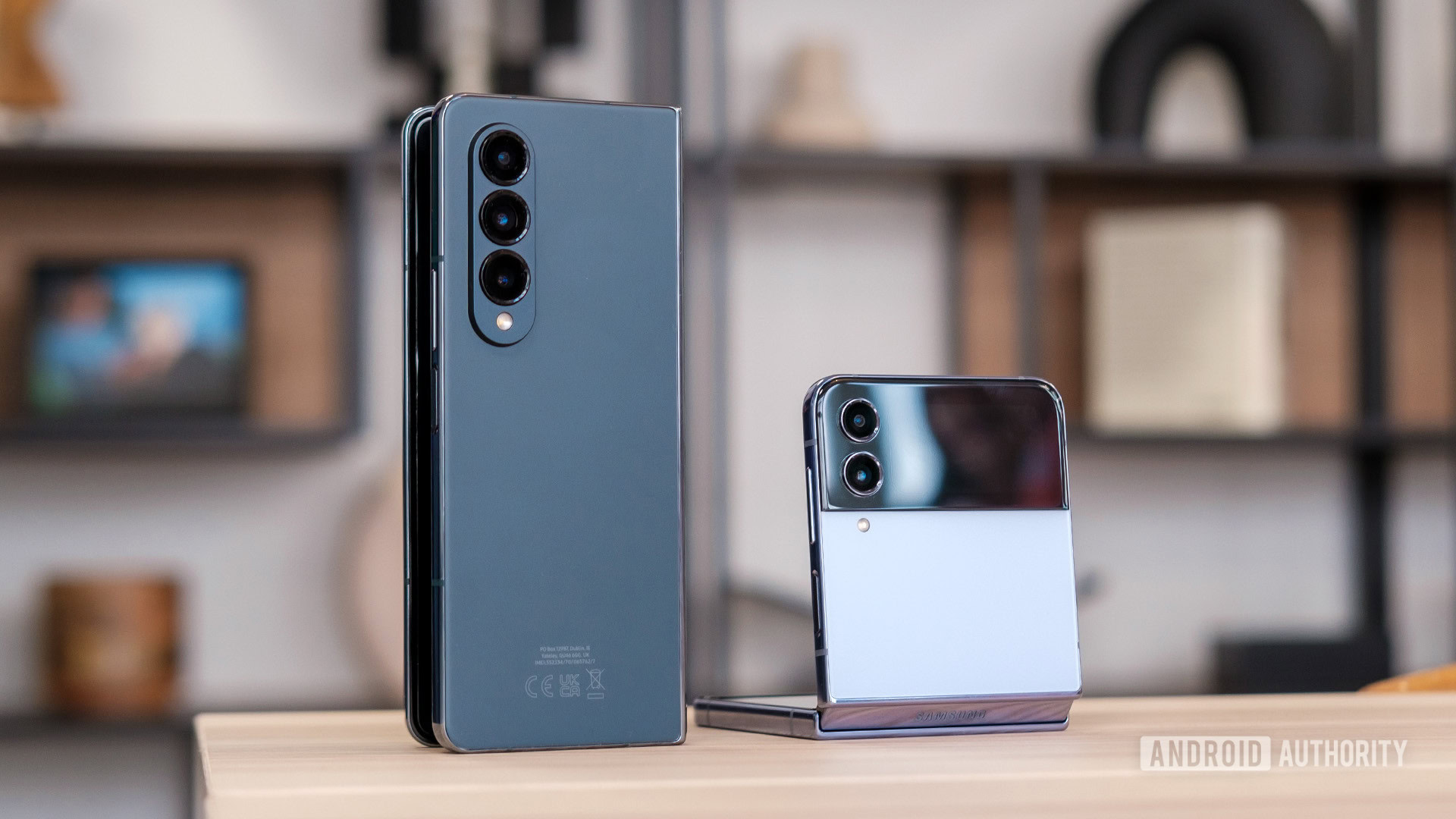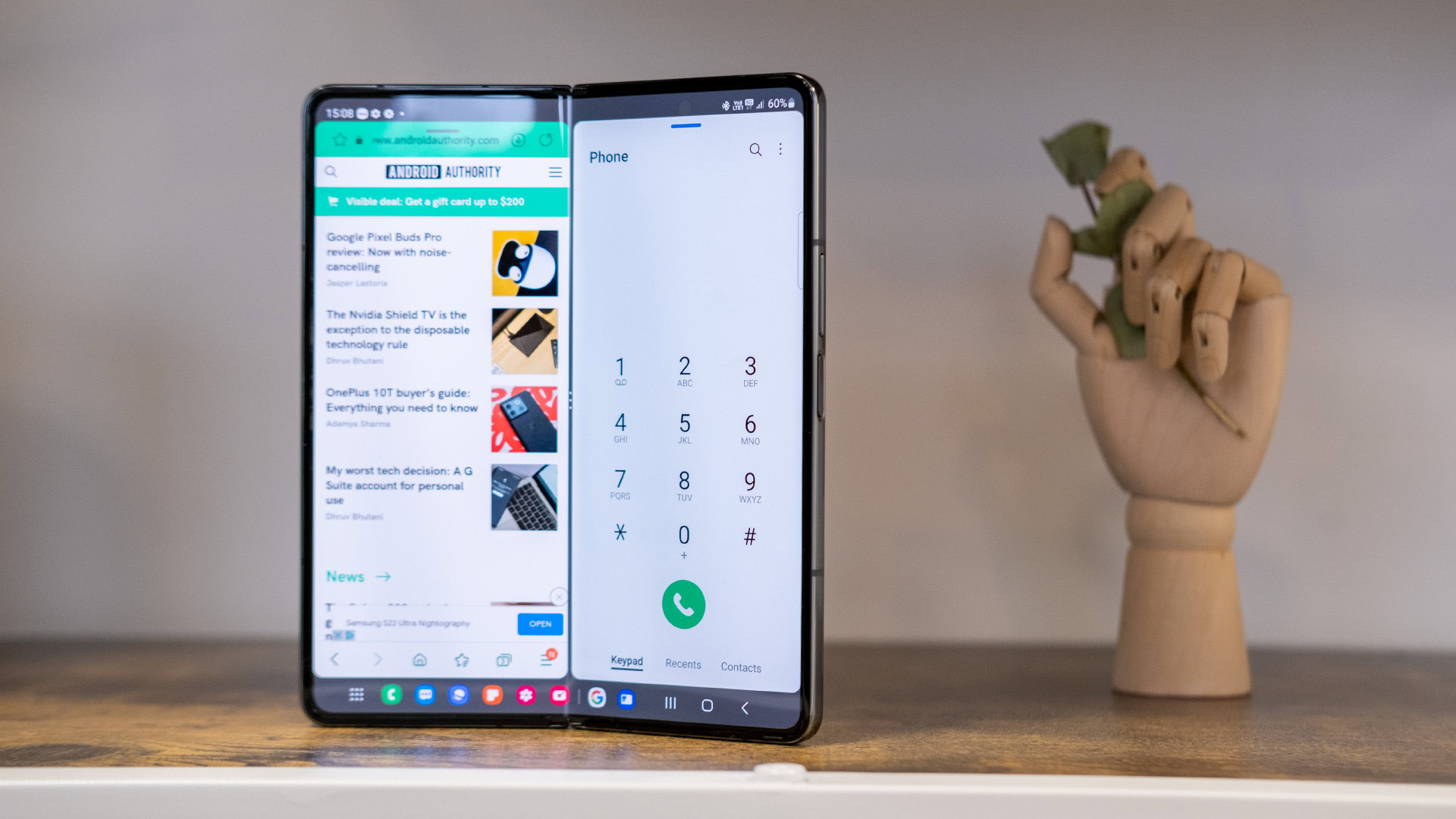Affiliate links on Android Authority may earn us a commission. Learn more.
Samsung's Fold is the showcase, but the Flip still has all the sex appeal
Published onAugust 13, 2022

Samsung’s latest foldables — the Galaxy Z Fold 4 and Galaxy Z Flip 4 — are almost polar opposites when it comes to their target market. On the one hand, the Fold is built for the business and power user, placing maximum screen real estate and state-of-the-art multitasking software at your fingertips, size and bulk be damned. The Flip is comparatively dainty and understated; it doesn’t claim to be brilliant at everything, instead leaning on its aesthetics and the enduring popularity of social media to make its case.
Depending on your outlook on what the ideal foldable phone “should” be, it may or may not come as a surprise that the Flip is by far the more popular of Samsung’s two foldable form factors. In late 2021, Samsung noted that the Galaxy Z Flip 3 accounted for 70% of its foldable sales in Korea, then reaffirmed the handset’s popularity during its most recent launch.
Our thoughts: Samsung Galaxy Z Flip 4 review
Based on what we’ve seen, this generation’s foldables won’t do anything to change the fact that the Flip is more popular than the Fold.
Are you planning to buy the Galaxy Z Fold 4 or Z Flip 4?
Powerhouse technology isn’t everything

There’s no denying that, from a technological standpoint, the Galaxy Z Fold 4 is the superior handset. It offers a more powerful multitasking setup, with a huge 7.6-inch internal display and the new taskbar as part of Android 12L. Samsung has also addressed a few lingering bugbears, upgrading the camera package with more competitive hardware, even if it’s not quite the best camera phone in the business. The exterior display is a little wider for one-handed typing, and wireless charging is faster too.
For the first time, Samsung has managed to squeeze almost all of its flagship-tier smartphone tech into a foldable form factor. There are still a few compromises, such as the so-so battery size and slow charging, but far fewer than with the Flip. Broadly speaking, customers no longer have to choose between specs and form factor; they can now have both. That’s a tantalizing reality, especially for those who have been hesitant about whether to leap based on trade-offs in previous generations. That said, the handset still isn’t great for watching video, there’s arguably more screen space than most people need most of the time, and it’s still a bit too chunky when relying on the more familiar front display.
Enthusiasts may love the Z Fold 4, but most customers aren't enthusiasts.
As we know, the Fold range’s target market is the power user; in that sense, it’s a successor to Samsung’s defunct Galaxy Note series. However, even the renowned Note range failed to sell in anywhere near the same volume as its more mainstream Galaxy S siblings for the simple reason that specs aren’t everything. Value for money, portability, and brand appeal play their part too. Just like the Note, enthusiasts may love the Z Fold 4 for its cutting-edge capabilities, but most customers aren’t enthusiasts.
Our full review: Samsung Galaxy Z Fold 4
Fashionable, functional, and fun make the Flip a winner

The Galaxy Z Flip 4 isn’t the technological showcase that the Fold is. It’s still a powerful and reasonably fleshed-out piece of hardware, but it makes a few more compromises on the classic phone formula in lieu of being more of a design statement. For instance, the clamshell design is instantly familiar to those of us old enough to remember the pre-smartphone era. In the modern day, there’s still something to be said for an ultra-portable phone that leaves room for something else in your pocket. And, unlike the Fold, the familiar screen layout makes it as recognizable to use as any phone in the past decade.
At the same time, Samsung is marketing the phone as a social powerhouse. Between the slightly upgraded camera, Quick Shot to take selfies in clamshell mode, Cover Screen photo previews, as well as FlexCam off-angle snaps for Instagram, WhatsApp, and Facebook, Samsung is playing to today’s avid social media user with some novel features. Paired with the new Cover Screen previews and split-screen app support to leverage video calls, social, image editing, and whatever else, there’s a lot for the social butterfly to fall in love with.
The Galaxy Z Flip 4 isn't just a phone, it's a fashion statement.
And for the fashion-conscious, the introduction of the Bora Purple color is undoubtedly a statement. But Samsung also offers the Bespoke Edition, with 75 unique frame, front, and back panel combinations to create a phone that’s entirely your own. It’s another design throwback to the good old days of interchangeable back covers. It’s interesting that the Fold or any of Samsung’s other flagships don’t receive the same treatment, don’t you think? The Galaxy Z Flip 4 isn’t just a phone; it’s a fashion statement that garners an appeal the Fold simply can’t command.
See also: The Galaxy Z Flip 3 convinced me that clamshells are the best foldable
Of course, the price also plays a major part in the Flip’s appeal. Exciting new technology at $999 is a lot more palatable than the $1,800 Samsung is asking for the Z Fold 4. That will always give the petite model an edge, but the cost is just part of the picture. While the Z Fold 4 is Samsung’s technological showcase, the Z Flip 4 gives us more insight into where foldables are likely to find long-term commercial success — adopting new form factors to do something fun and exciting that can enthuse consumers with a sense of something genuinely different.
The Z Flip 4 shows us how adopting a new form factor to do something fun and exciting can get users excited about smartphones again.
I’d say the Fold is like a free jazz solo; appreciated by those who love the complexity, but it’s a bit of a niche to get into. Meanwhile, the Flip is the pop earworm; catchy, instantly familiar, with a mass market appeal that even some more discerning critics might secretly enjoy. You can love either, neither, or both, but the Flip will certainly be more commercially successful in the foreseeable future.

Large internal display
Long-term software support
